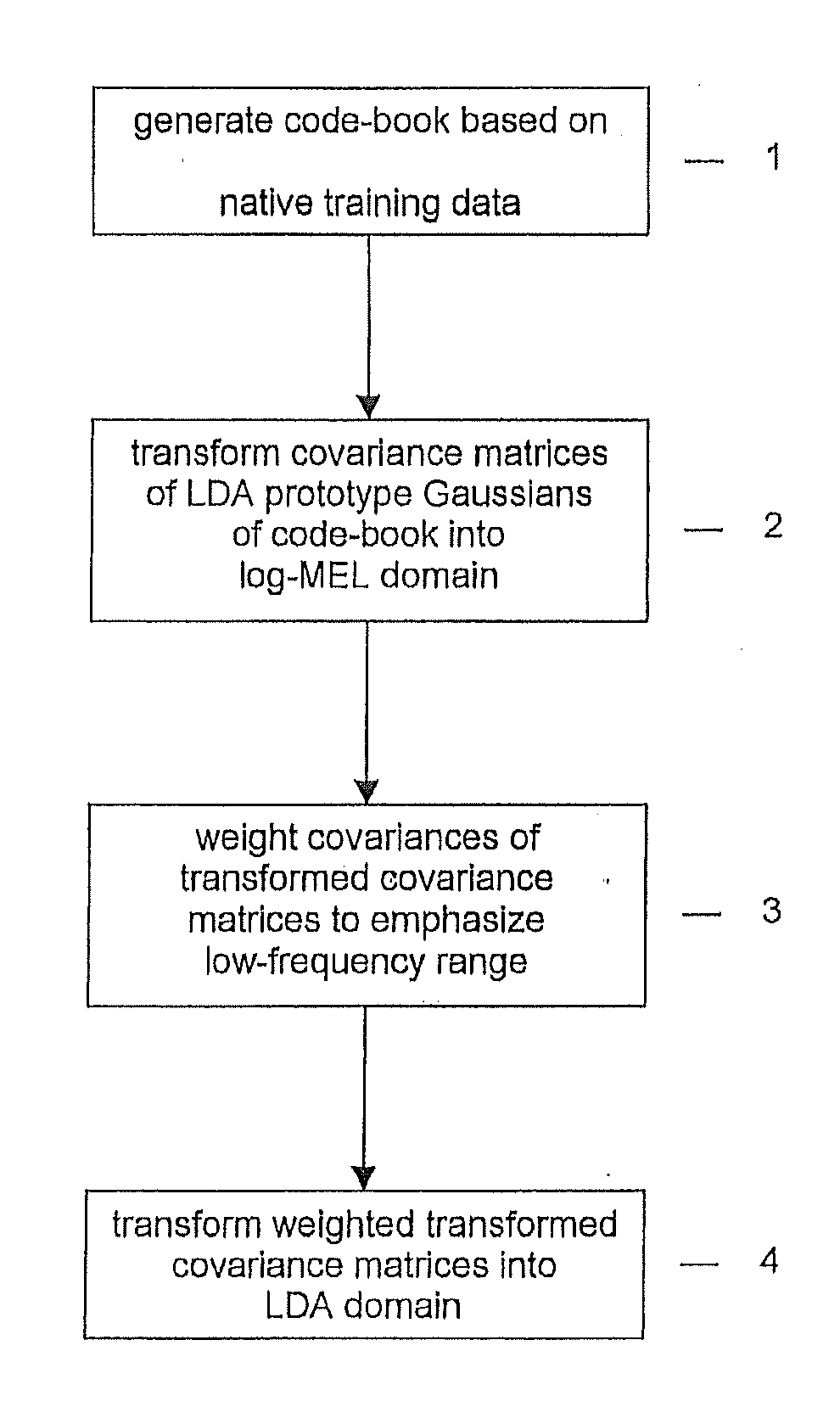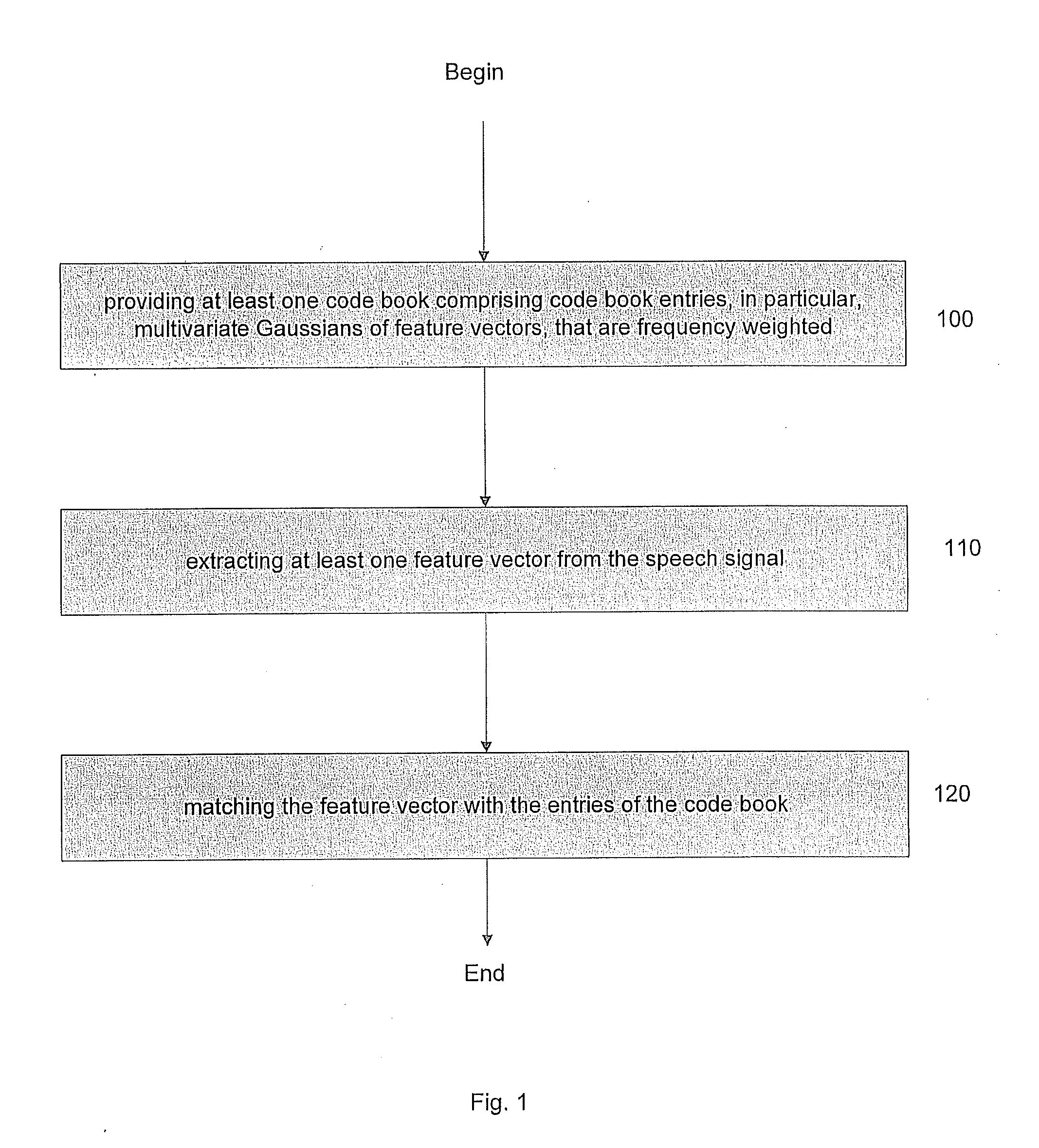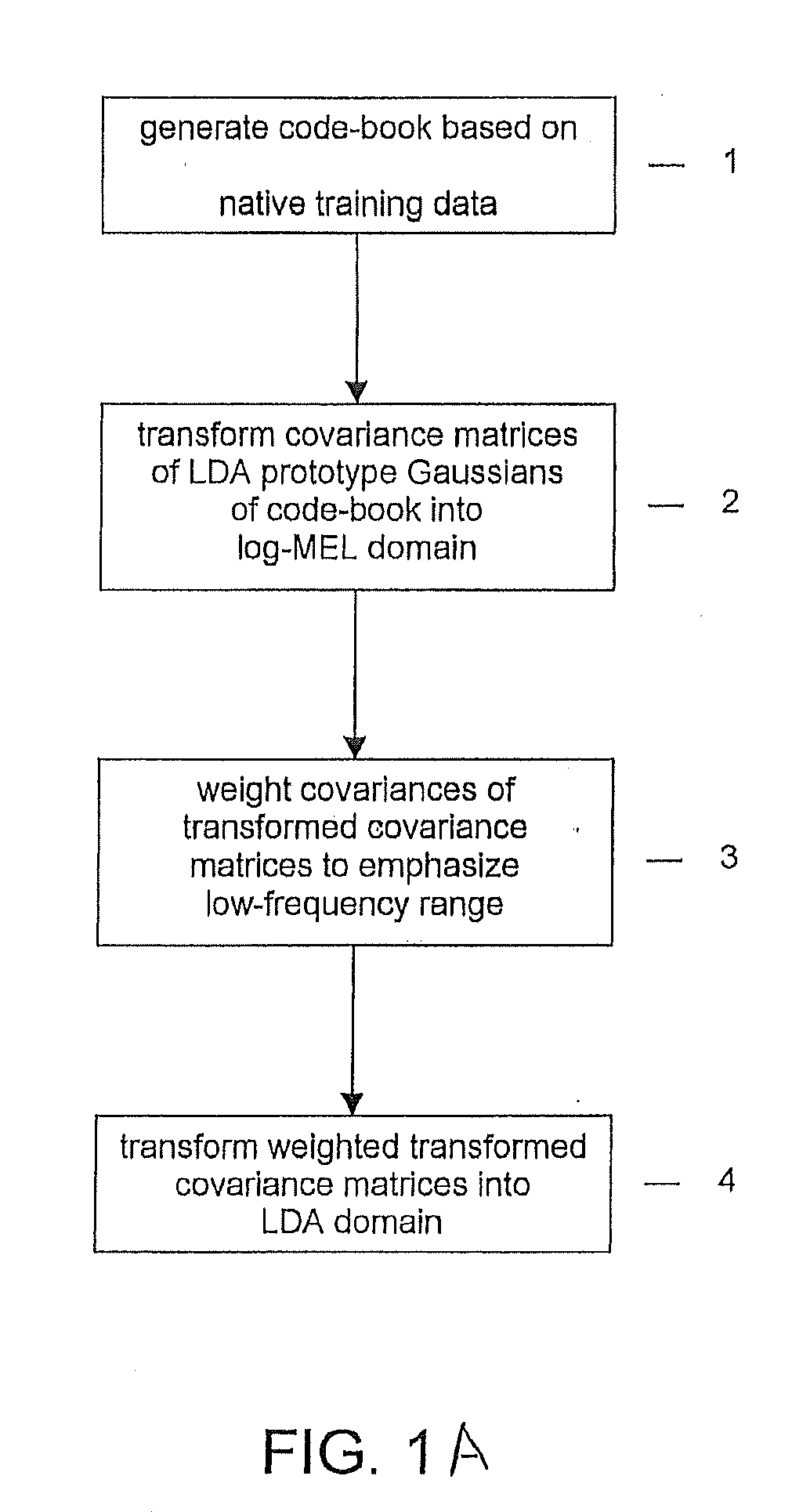Speech Recognition
a speech recognition and speech technology, applied in speech recognition, speech analysis, instruments, etc., can solve the problems of significant increase in the error probability of the speech recognition process as compared to native speakers, and achieve the effects of reducing the dimensionality of the feature space, saving memory and processor resources, and little loss of separation accuracy
- Summary
- Abstract
- Description
- Claims
- Application Information
AI Technical Summary
Benefits of technology
Problems solved by technology
Method used
Image
Examples
Embodiment Construction
[0039]Disclosed herein are a system and computer-implemented methods and computer program products that account for differences in pronunciation by non-native speakers.
[0040]Speech recognition systems use an acoustic model that include codebooks with Gaussians representing sounds of human utterances and Hidden Markov Models that can be mapped to feature vectors extracted from received speech.
[0041]FIG. 1 shows a first method for enabling a speech recognition system that accounts for non-native speaker pronunciation. A code book is retrieved by a processor that contains multivariate Gaussians of feature vectors. The Gaussians centers may, e.g., be defined by respective format frequencies. The Gaussians represent sound of a natural human language and matching of feature vectors with Gaussians results in outputs of the likelihood that an actual speech fragment / signal corresponds to the distributions given by the individual Gaussians. The Gaussians are frequency weighted. The weighting ...
PUM
 Login to View More
Login to View More Abstract
Description
Claims
Application Information
 Login to View More
Login to View More - R&D
- Intellectual Property
- Life Sciences
- Materials
- Tech Scout
- Unparalleled Data Quality
- Higher Quality Content
- 60% Fewer Hallucinations
Browse by: Latest US Patents, China's latest patents, Technical Efficacy Thesaurus, Application Domain, Technology Topic, Popular Technical Reports.
© 2025 PatSnap. All rights reserved.Legal|Privacy policy|Modern Slavery Act Transparency Statement|Sitemap|About US| Contact US: help@patsnap.com



